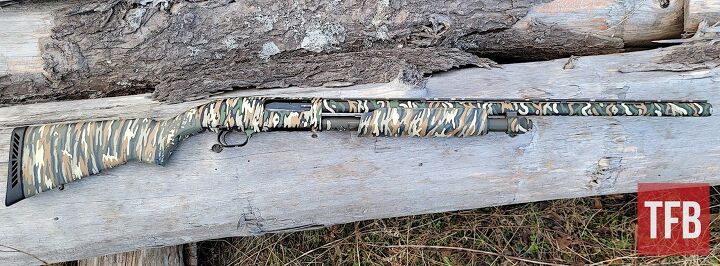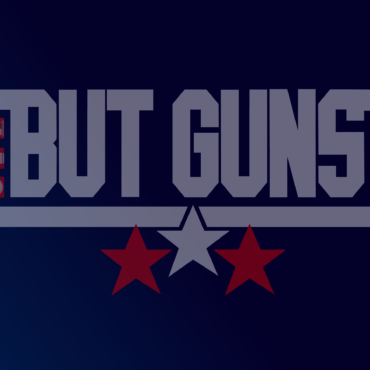Fudd Friday: Mossberg 835 – The Gun That Killed The 10 Gauge

More than 10 years ago—10 years ago—TFB ran an article on the decline of the 10 gauge and 16 gauge. Things have gotten far worse since then, I’m afraid. In 2025, the 10 gauge is all but dead, and while there are several contributing factors, the Mossberg 835 is the gun that killed it.
Duck blasters @ TFB:
Why 10 gauge matters
But who even cares? The 10 gauge is basically a cannon, right, like shooting a shoulder-mounted howitzer? Isn’t it more punishing to the shooter than the target?
That’s the reaction I always got from people when I talked about taking one of my big 10s out hunting, and I always told them the same thing: The recoil isn’t bad at all, and the downrange performance puts the 10 gauge in a class of its own.

Originally, people shot 10 gauges because the bigger bore meant you could stuff more pellets into the shotshell. That theoretically improved your chances of hitting a moving target, especially at longer ranges; there were other advantages to the 10 gauge, particularly with shot string, but those were beyond the ken of most hunters back then. They just liked the heavier payloads.
Most 10 gauges were chambered for 2 ⅞-inch shells around the end of the 1800s, when 12 gauges were chambered for 2 ¾-inch shells, or even 2 ½-inch loads. The 3-inch 12 gauge load caught up in the early 1900s, but the 10 gauge got a leg up again in 1932 when Winchester and Ithaca collaborated on the 3.5-inch 10 gauge magnum load. At that time, the 10 gauge’s hitting power was uncontested. For shooters who wanted to target birds at extreme range, big 10-gauge doubles were where it was at. While Elmer Keith is primarily known for his pistol and rifle shooting, he also wrote about knocking down big waterfowl at 90 yards with a double-barrel 10, proclaiming that to be more sporting than shooting close-up birds over decoys.

Depending how those old guns were built, they could pack a lot of recoil, but as ergonomics improved and gas-operated repeaters came out, there was no real reason an abled-bodied man couldn’t handle a 10 gauge. But they were still niche guns, until a big change came to waterfowl hunting that looked like it might bring the 10 gauge to the forefront.
When non-toxic shot was in the process of becoming mandatory for waterfowl hunting, the earliest loads were not considered very effective. Maybe it was time for the 10 gauge to shine, some people thought—and then in 1988, Federal introduced the 3.5-inch 12 gauge shell, and Mossberg brought out the Model 835 pump-action shotgun to take advantage of it.
The first 3.5-inch 12 gauge
The Model 835 was unique because it was the first production shotgun chambered for 3.5-inch 12 gauge loads, but it had more going on besides a stretched-out chamber. The 835 also had its barrel overbored to about .775 inches—same as a 10 gauge barrel. Basically, the 835 had a 10 gauge barrel on a 12 gauge chamber. That meant you could have most of the advantages of the 10 gauge, including improved shot string and heavier payloads, but lower-cost cartridges.

I don’t think people realize what a big deal this was. Less-dense non-toxic pellets meant that hunters had to use larger-sized shot, and the 835 was ready to handle them with that overbored barrel. And while it wasn’t a fancy-finished shotgun on par with a Remington Wingmaster or an Ithaca 37, it was based off the Mossberg 500 action, which had been in production for decades at that point. It was proven, it was affordable, and it worked. Nearly 40 years later, Mossberg still sells the 835, and it still works as well as it did back then.

In the mid-2020s, shotshell design has improved the 3.5-inch 12 gauge to the point that, for most users, a 10 gauge isn’t desirable. Many 12 gauge duck guns have a bit of overboring or backboring, but nothing like the 835 (or the Mossberg 935 semi-auto, which has the same .775-inch diameter barrel). But for those who’ve owned a 10 gauge, and seen its benefits first-hand, there is no substitute. When late November rolls around, and the big redleg ducks scoot in from the far north, I miss my big marsh cannons. I never found anything else that could compare for rolling black ducks at long range.

But I saw the writing on the wall years ago. I shot off most of the 10 gauge shells I had left, then sold my 10 gauge BPS; my double and my single-shot 10s had gone years before that. I bought a Mossberg 835 and started stocking up on 3.5-inch 12-gauge loads instead. Now, Browning has discontinued the 10-gauge BPS and all the other guns in this chambering disappeared off the market a long time ago.

But somewhere, in the back of a cabinet, I’m still hanging on to one last box of 10-gauge loads. You never know when the right deal will pop up on another one.


